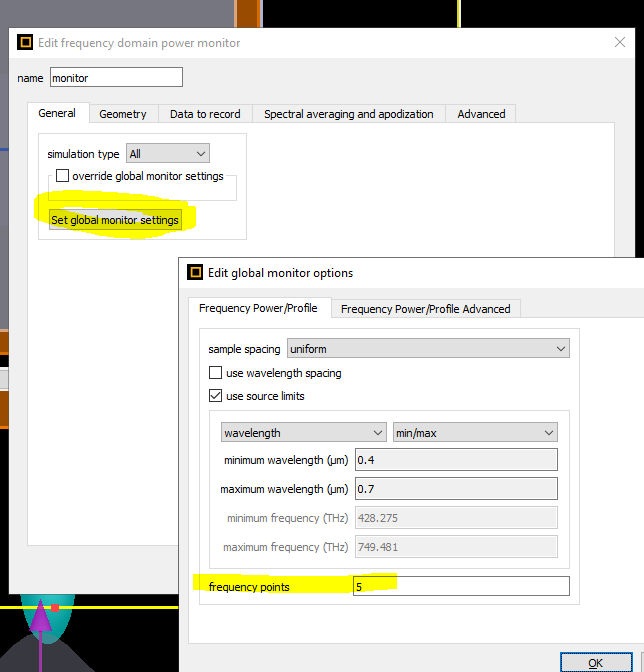-
-
April 23, 2021 at 7:56 pm
Chris Kopetski
Ansys EmployeeIt is very important to understand that you can obtain the CW (single frequency, steady-state) response of the system, even though the source signal was a short, broadband pulse.nFDTD always excites the system with a short pulse, even when you are interested in steady state, continuous wave (CW) results. The steady state response is obtained by doing a fourier transform of the time domain fields. This approach is more efficient than directly using a CW source in the time domain simulation. Details can be found at Understanding frequency domain CW normalizationnSource setupnUse the Frequency/Wavelength tab to set the frequency range of interest. If you're only interested in results at one frequency, just set the start and stop values to the same number. n nMonitor setupnIf you want steady state CW results, (at one frequency or many frequencies) use a frequency monitor. These monitors calcualte the steady state response of the system via a fourier transform of the time domain fields. Typically you just need to specify the number of frequency points to collect. If the source start & stop frequency are the same number, then the monitor will automatically collect data at just that one frequency.n
nMonitor setupnIf you want steady state CW results, (at one frequency or many frequencies) use a frequency monitor. These monitors calcualte the steady state response of the system via a fourier transform of the time domain fields. Typically you just need to specify the number of frequency points to collect. If the source start & stop frequency are the same number, then the monitor will automatically collect data at just that one frequency.n nn
nn
-
Viewing 0 reply threads
- The topic ‘Why does FDTD inject a pulse when I want a steady state, single frequency CW source?’ is closed to new replies.
Ansys Innovation Space


Trending discussions


Top Contributors


-
3862
-
1414
-
1220
-
1118
-
1015
Top Rated Tags


© 2025 Copyright ANSYS, Inc. All rights reserved.
Ansys does not support the usage of unauthorized Ansys software. Please visit www.ansys.com to obtain an official distribution.







